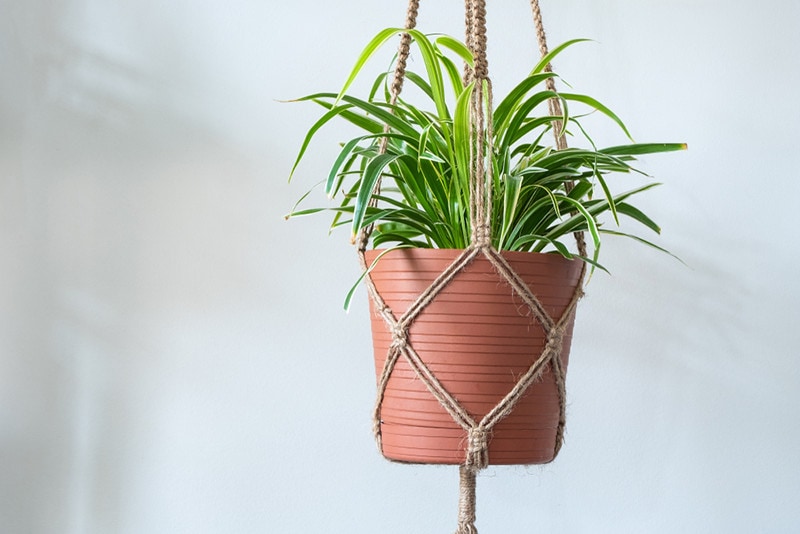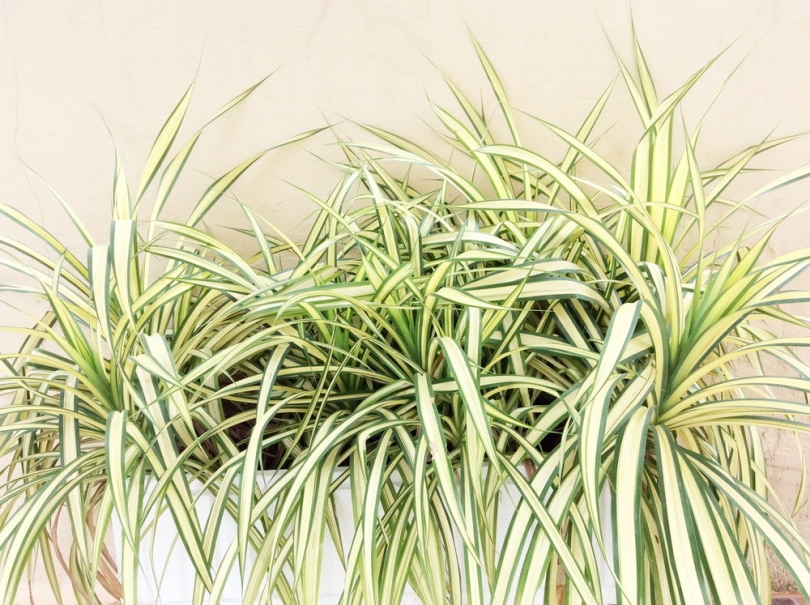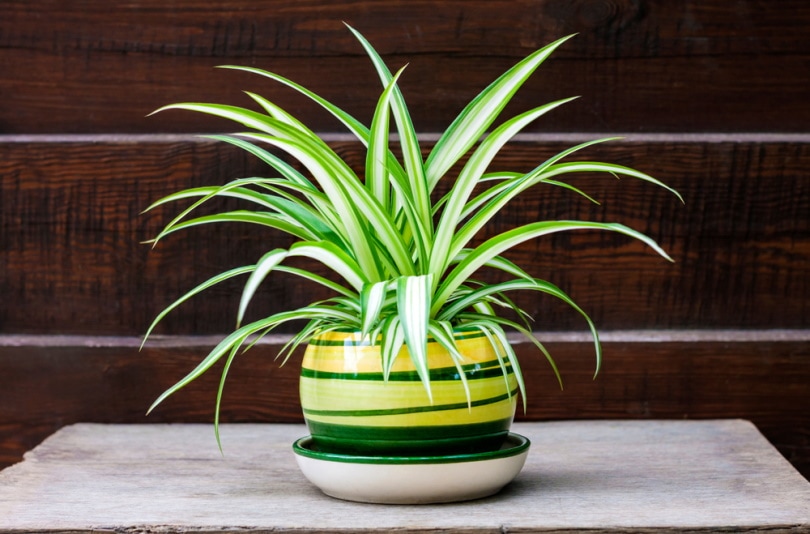Do Spider Plants Like to Be Root Bound? (Repotting Tips)
-
Kristin Hitchcock
- Last updated:

It isn’t necessarily that spider plants like to be root bound. However, they can adapt to living in tight spaces that would harm other plants. That doesn’t necessarily mean that you should allow the spider plant to become root-bound or anything of that sort. If they get too pot-bound, their soil can lose drainage and aeration. Sometimes, their roots may even block the drainage holes.
Therefore, you can keep them slightly rootbound. However, we wouldn’t recommend letting the roots terribly outgrow the container. You will still need to replant spider plants regularly—just like with any other plant.
There are a few benefits to these plants being slightly root-bound. A rootbound plant will start producing more flowers and spiderlings, which may be useful in a variety of situations. If you notice that your plant is rootbound, you can leave it alone for a bit. However, as we’ve stated, we wouldn’t recommend never repotting it.
Repotting Spider Plants
After a while, a spider plant will begin to truly outgrow its container. Typically, this occurs when the spider plant’s roots take up so much room that the soil no longer drains well. The drainage holes can become covered and cause root rot if you aren’t careful.
Therefore, you will need to replant your spider plant when the soil quality starts to diminish.
Spider plants take about 2–5 years to reach maturity. Therefore, until then, they will continue to grow quite rapidly. You should check at least once a year to see if the roots are protruding through the drainage holes. If they are, it is a sign that your plant is too big for its pot.
When repotting your plant, aim to go one pot size higher. Often, you want to allow for about an inch between the plant’s root ball and the walls of the container. This will provide the plant with plenty of room to grow.
In some cases, you may want to divide your spider plant into several smaller pots to stimulate more growth (and create new plants).

Dividing Spider Plants
When your spider plant becomes rootbound, you have several options. You can replant the plant into a larger pot, or you can divide it into multiple plants. This can be a bit challenging to do when a plant is severely rootbound, but it can be helpful for the plant’s overall growth.
To do so, simply divide the root ball into two to four equal sections. Place these sections into their own pots. Remember, you want about an inch from the wall of the container to the root ball. Size your pots accordingly.
Now, you’ll have more spider plants and need to worry less about them becoming rootbound. Older plants can be revitalized in this way, so most spider plant gardeners decide to divide their plants eventually.

What Kind of Pots Do Spider Plants Like?
The most important consideration for a spider plant is the size of the pot. You want to get the sizing right above all else. The material doesn’t matter too much, and neither does the shape of the pot. However, if you choose a pot that’s too little, you’re asking for trouble.
We recommend getting a pot with drainage holes. Spider plants can get root rot without proper drainage. Therefore, drainage holes are crucial. Check to ensure your chosen pot has drainage holes before buying it. You can drill holes into some pots, depending on the material, if they have no drainage holes already.
Beyond that, we recommend choosing a pot you like. It doesn’t matter much to the plant what the pot is made from or what shape it is. As long as there is enough room for the roots and leaves to grow, the plant should flourish in the new pot.
 Conclusion
Conclusion
Spider plants do like to be slightly root-bound. However, they will reach a point where repotting is required. If you notice roots in the drainage holes of the pot, you should consider repotting the plant. Eventually, the roots will start blocking the drainage holes, leading to excess water remaining in the pot. This water will cause all sorts of problems, which is why we recommend repotting before this happens.
Still, you don’t have to repot spider plants all that often. You can also divide the plant into smaller containers, which will promote more growth.
Featured Image Credit: TippyTortue, Shutterstock
Contents
